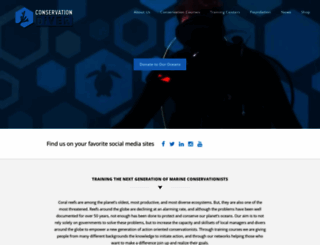Conservation Diver Foundation: Research, Protection, and Restoration
Page Load Speed
4.5 sec in total
First Response
497 ms
Resources Loaded
3.4 sec
Page Rendered
534 ms

About Website
Click here to check amazing Conservation Diver content. Otherwise, check out these important facts you probably never knew about conservationdiver.com
Conservation Diver is dedicated to training the next generation of marine conservationists, and you can join us in person or remotely.
Visit conservationdiver.comKey Findings
We analyzed Conservationdiver.com page load time and found that the first response time was 497 ms and then it took 4 sec to load all DOM resources and completely render a web page. This is a poor result, as 65% of websites can load faster.